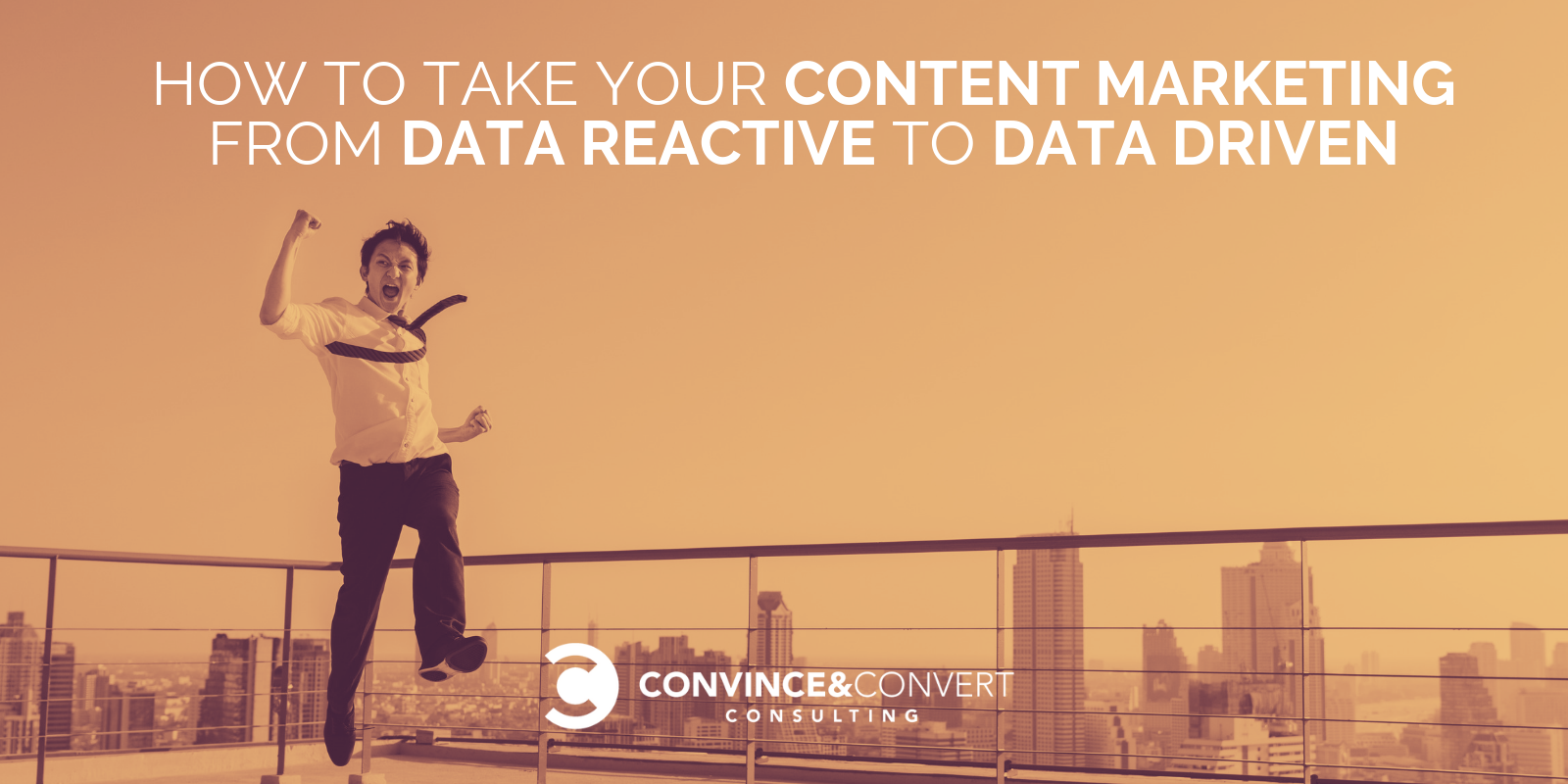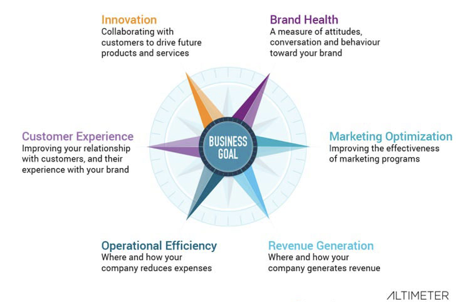
You’ve been told over and over that content marketing needs to be data driven.
You’ve been told that you need to prove ROI. To show the business impact of what you do. To measure everything back to dollars and cents so you can make your case to the executive team.
While tying your efforts back to ROI is incredibly important, your efforts at utilizing data shouldn’t stop there. Being data-driven doesn’t mean just showing value. It means using data to give your organization a competitive advantage against even the biggest, burliest of competitors.
Being data driven means using data to give your organization a competitive advantage against even the biggest, burliest of competitors. Click To Tweet
In practice, it means understanding what campaigns will succeed before they are even created.
Imagine that: no more trial and error and wasting months to figure out if your audience even cares about the content you’re creating.
Sound appealing? Great. Let’s dive into how to make it happen.
This is not data-driven content marketing.
Having solid numbers at the end of a campaign to show your executive team feels like a win for being data-driven. But, unfortunately, this isn’t being data driven. It’s being data reactive.
Unless you are actively using data to make predictions about what is going to happen with future campaigns, you’re stuck in a data reactive cycle.
You know you’re in a data-reactive cycle if you find yourself constantly throwing content against the wall and then seeing what sticks. Then, when you find something that sticks, you have trouble replicating its success.
What is data-reactive content marketing?
Measuring your success at the end of a campaign doesn’t help you get to that end. It simply shows you how you did.
Knowing how you did is great, and you can probably use some of that insight into future campaigns, but it did little to no good for the current campaign.
Many organizations are stuck being data reactive. Even if you’re not utilizing data at all in your content marketing, you may think that just getting to being data reactive — just getting any kind of data — would be a win.
Instead of taking the intermediate step from no data to being data reactive, you are actually in a great position to make the leap to being data driven, because you have no data baggage. Sometimes it’s easier to learn a new habit than break an old one.
What is data-driven content marketing?
Data is great at telling you how you did. The vast majority of analytics systems are built to show you this information. But getting data to tell you what to do next is a key differentiator between some of the best marketers in the world and those who are trying to catch up.
Being data-driven means utilizing data to know how you did AND what to do next.
5 Steps for Becoming a Data-Driven Content Marketer
1. Set where you need to go.
In order to know what to do next, you need to know where you’re going. The first step in becoming data driven is aligning your content strategy to real business objectives.
These objectives must be:
- Specific: For example, 100 leads, 20% growth in inbound traffic, etc.
- Time-sensitive: 1 week, 1 month, 6 months, etc.
- Measurable: Your goal has to be quantifiable and measurable.
Content marketing can support a myriad of business objectives — sometimes many at a time.

2. Identify how you’ll measure your progress.
Next, you need to know how you’re going to measure your progress along the way. This measurement will show you if you’re on course to your goal, or if you’ve deviated and need to make adjustments.
This is where data-driven methodology starts to deviate from data-responsive methodology. In data-responsive methodology, you may wait until the end of the campaign to see where you ended up. In data-driven, you’re using data as a map every step along the way.
Here are just some example metrics you can use for measuring the business objectives listed before:
3. Use data to predict trends.
There’s a lot of talk about predictive analytics out there, but what does it mean that the data is predictive?
For one, it looks for patterns in the data to identify future trends that are emerging. For example, content intelligence platforms like Ceralytics or Concured will look for patterns in your own content and identify what topics you’ve covered to saturation, meaning each piece of content you create about that topic has diminishing returns. It can compare that content vs. topics it identifies that you underutilize: topics that you don’t cover enough and are emerging trends.
Other predictive analytics can uncover untapped audiences who have similar pain points as your target audience that you’re not addressing.
This data predicts gaps and untapped areas where you should focus your time, instead of you having to rely on trial and error.
4. Prescribe actions to take.
Building on predictive analytics, prescriptive analytics tell you what you should do next.
Knowing where you have gaps and untapped opportunities is great. But you need to know what to do with those opportunities, right?
Prescriptive analytics brings in data points from many different sources to build a complete picture of what’s happening and what should be done moving forward.
For example, if an emerging trend in your industry is identified with predictive analytics, prescriptive analytics will tell you that creating a video, compared to a blog post, would create better results when you address a specific pain point through content.
5. Continuously measure your content.
Measurement is no longer something that happens at the end of a campaign. Instead, it needs to happen as the campaign is happening, when changes can still be made and the ship corrected.
With content campaigns, you may notice early on that certain channels are outperforming others. It may be worthwhile to adjust budgets on the fly to allocate more money to overperforming channels and away from underperforming channels.
Some tools will even alert you in real time if campaigns start to go off track.
Transform your data into action.
The biggest content marketing players are using data-driven analytics to make their content decisions. Click To Tweet
In the data-reactive methodology, you may have created 6 months worth of posts, analyzed their performance, and then created more posts like those that performed best. This approach is resource-intensive and takes far too long to find out if you’re succeeding or failing.
With the data-driven content marketing approach, you analyze what’s currently working for you, where new trends are opportunities, and what content you should create to seize those opportunities. And it’s done without guessing.
The biggest content marketing players are using data-driven analytics to make their content decisions. They have teams of people to make this happen.
The good news for the rest of us is that new marketing AI technologies are democratizing data, so players of all sizes now have access to data that can give us a competitive advantage.
Next steps
Moving your content marketing approach from data reactive to data driven won’t happen overnight, but it also won’t happen unless you start taking solid steps right now. If you don’t have the ability to predict and prescribe the content that will work in the future, now might be a good time to investigate how you can get that data.